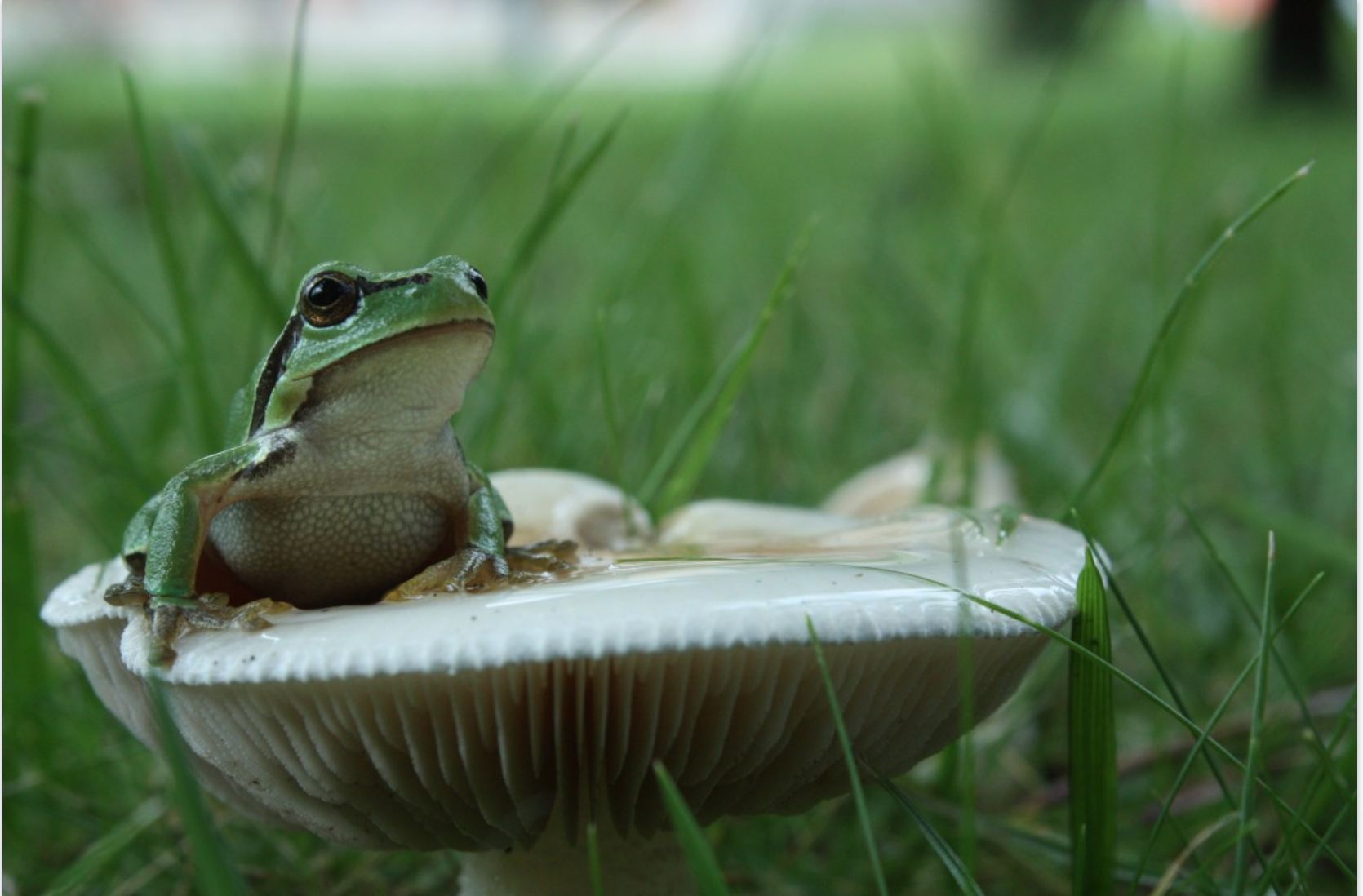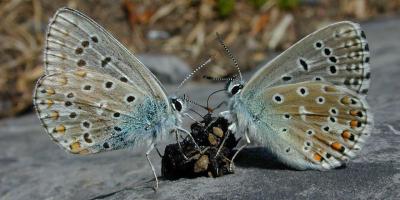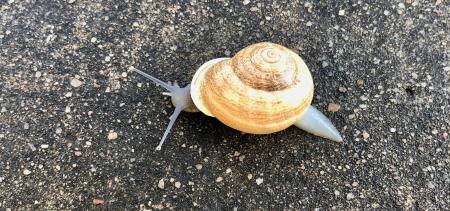Users Who Spiked

OF FROGS AND FUNGI
Private Notes
Private Notes
Notes
It was the summer of 2013 when I relocated from Colorado to Georgia to further my academic education. My partner at the time made a pretty respectable salary and so we rented ourselves a pretty respectable house with an enclosed back patio. I was outside one night, relaxing on said patio, when I heard an unfamiliar sound. It was almost like the chirp of crickets, which was why I went to insects as my initial guess at its source. But, it wasn't long before my partner, who was from Indiana, clarified for me. The creatures making this sound weren't insects, they were amphibians. He called them "spring peepers" for the peeping sound they make when it's mating season. They're a tree frog known scientifically as Pseudacris crucifer. It's easy to find pictures and videos of these cute little guys online (once you know they're not crickets) because they're pretty common. Well, more common in the southern states like Georgia and less in the chillier regions like Colorado.
I'm not an expert on amphibians, but I do think they're cool. That's why I'm a bit concerned that a lot of other frogs are disappearing. Like a lot of animals, they're losing their habitat. The more wetlands we drain and develop, the fewer frogs we'll have. It doesn't suck just because they're cute. Frogs provide food for birds, snakes, raccoons, turtles, and alligators and before they become lunch themselves, they help us out by eating lots and lots of insects. Habitat loss though, isn't the only reason frogs and other amphibians (like salamanders) are fading from the planet's ecosystems. Hundreds of amphibians have recently gone extinct all over the world because of a fungus called Batrachochytrium dendrobatidis (Bd for short).
Last October, I had the chance to talk to someone who's doing their best to change that. Her name is Dr. Taegan McMahon and she's a Professor of Biology at the University of Tampa. The two of us had connected because I have a podcast all about fungi. Yes, I regularly talk about molds, spores, and mushrooms for an audience. The show is called Fungi Town (and you can listen at www.fungitown.org or wherever you get your podcasts). Dr. McMahon joined me for my thirteenth episode and told me about her research with the frog-killer fungus, Bd. It's a fungus that has motile spores, meaning that these little things have a tail (called a flagellum) that helps them swim. That puts them in an ideal position to infect animals that live in and near the water.
It turns out that frogs and salamanders aren't the only animals Bd seeks out. Crawfish are riddled with the fungus, but it doesn't do much to them. It's a scenario sort of like a Staph infection in humans. A person might be infected with the bacteria that causes a Staph infection, but not be sick. They would be what's called an asymptomatic carrier. But, even if they're not sick from the infection, they can still spread the bacteria around and make someone else sick. So, while a crawfish won't get sick from Bd, it can still carry those spores around. Those spores can then leave the crawfish and spread to amphibian hosts, where they cause serious infection and death.
Before you start thinking that you'll catch a Bd infection at the next neighborhood crawfish boil, don't worry. First of all, the high temperatures of the boiling water will kill off the fungus. Secondly, it doesn't infect humans. The crawfish only becomes a problem as far as the frogs and salamanders are concerned. If you want to help prevent the spread of the fungus, don't throw any raw crawfish out near a stream or a lake. Either cook all of the crawfish before the extras get disposed of or make sure the remains won't end up polluting nearby waters. Dr. McMahon has swabbed Louisiana farmed crawfish and has confirmed that they carry the fungus. Massive shipping of these critters all across the US is a big suspect in the spread of this disease.
There are some frogs who aren't threatened by Bd. Bullfrogs shed so often, they slough off the spores before the fungus has the chance to affect their health. The little water frogs they sell in pet shops (African clawed frogs) carry the Bd fungus too. But, their skin produces mucus that's high enough in antibodies that it renders the fungus harmless to them. These frogs, because they are carriers of the fungus and because they're exported internationally, are also a presumed source for the spread of the disease. It's easy to aim the blame at pet shops for stocking these webfooted carriers, but these frogs were used in medicine prior to the 1930s. Why? Oddly enough, they were used as pregnancy tests. Doctors would inject the poor little guys with a woman's urine. If the frog laid eggs, that meant the woman was pregnant. Medical science is weird sometimes.
My conversation with Dr. McMahon wasn't all doom and gloom though. In fact, the reason her story is so interesting is that she's finding hope for the frogs. She's figured out a potential vaccine for the Bd infection. We also talked about how to vaccinate a frog, what herd immunity is, and how to tell the difference between a toad and a frog. But, I'm not going to spoil the episode for you! You'll have to get the good news from the frog doctor herself and listen to episode 13 of Fungi Town!
Comments
Please login to post comments on this story
-
Super interesting! Shared this with my husband!
-
Glad there's hope for the frogs. It's so sad to hear about any living creature's extinction. Thanks for sharing!
-
Oddly enough, they were used as pregnancy tests. Doctors would inject the poor little guys with a woman's urine. If the frog laid eggs, that meant the woman was pregnant.
That is crazy!!!! Poor frogs :( I am sure you have heard of it, but there is some kind of fungus killing off bats in NC and probably other areas too. We learned about it when I took my daughter to Linville Caverns. They made us wipe our feet on a bristled mat to prevent bringing the fungus into the caves. Anyway, thought I would mention it just in case it might help give you a topic to talk about in your podcast or write about on here.






































I have actually done an episode on White Nose Syndrome. It's been wiping out North American bat populations for the better part of 10 years, sadly. In fact, I read an article just this morning that the local bat colony where I'm volunteering has just come up positive for WNS. It's encouraging that some populations in New York appear to be showing signs of recovery. I'll write a new article here on WriteSpike about it! Thanks for the suggestion.